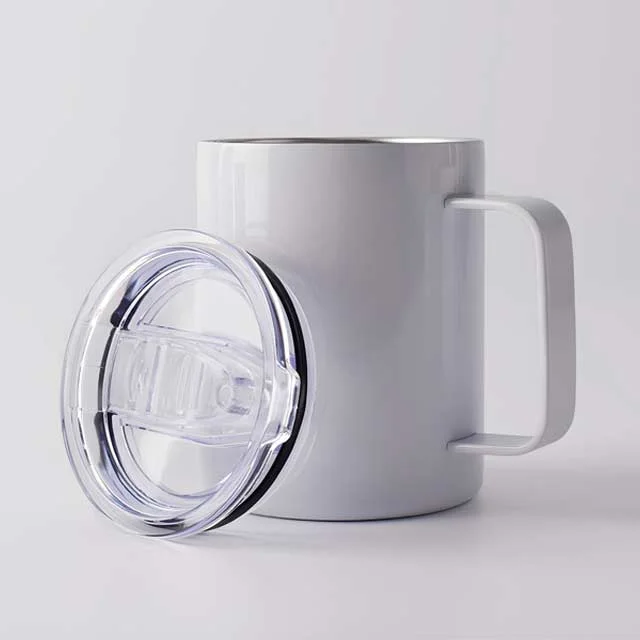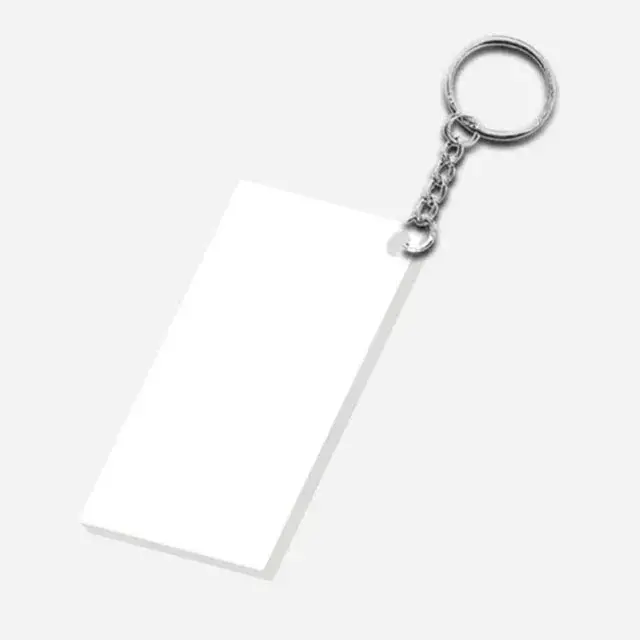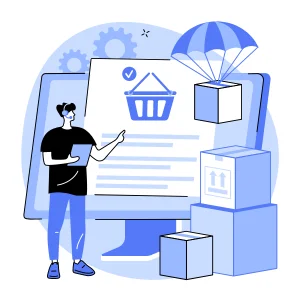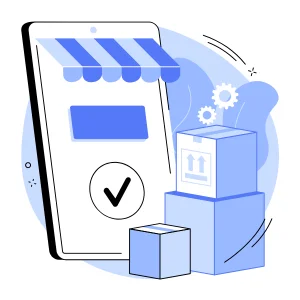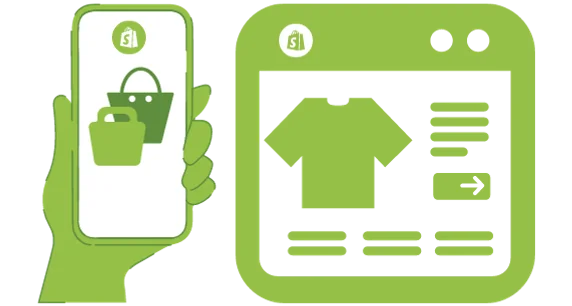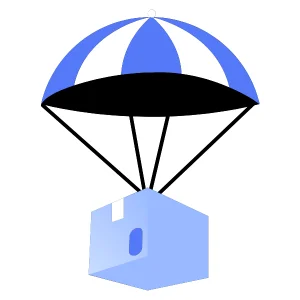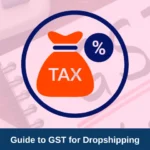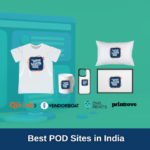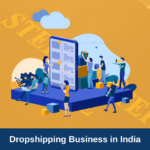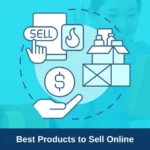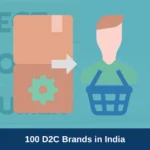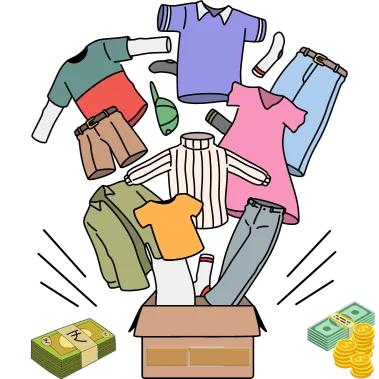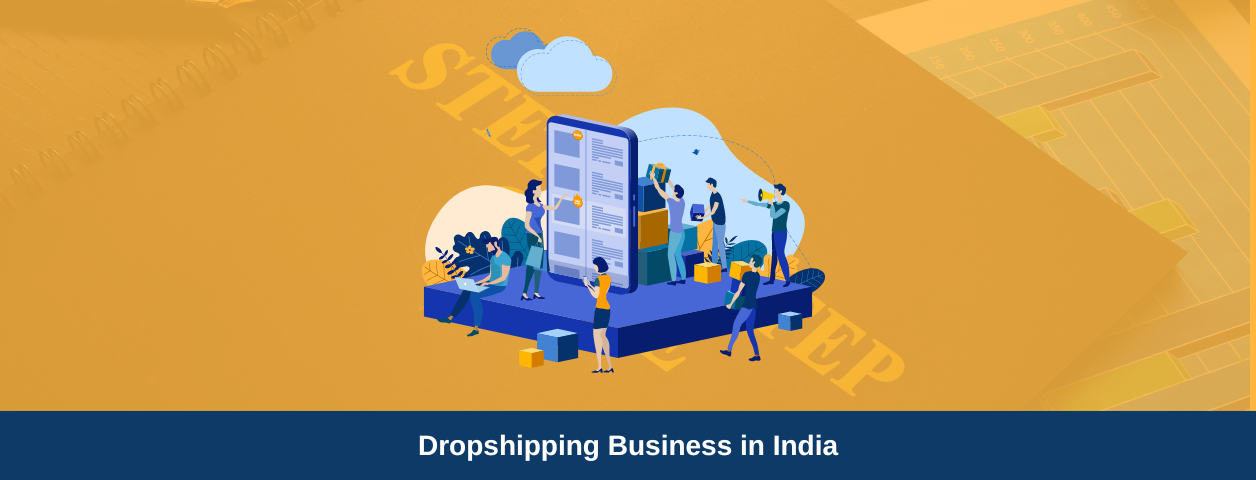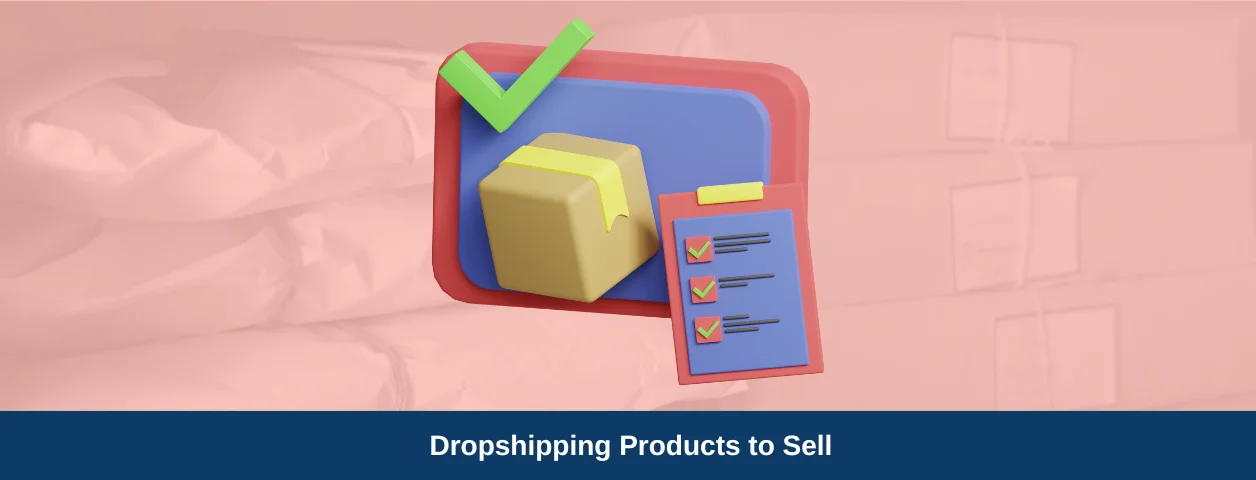Dropshipping’s meaning can be understood clearly by defining What a dropshipping business is. Glossary, The Process, The Benefits, and a live example. Read up to know all the terms used in the dropshipping business.
Dropshipping is a retail fulfillment method where a store doesn’t keep the products it sells in stock. Instead, when a customer orders, the store purchases the item from a third party and has it shipped directly to the customer.
In other words, the store acts as a middleman between the supplier and the customer, handling the marketing and sales. In contrast, the supplier takes the products’ manufacturing, storage, and shipping.
This allows the store to offer a wide range of products without needing inventory management or upfront costs.
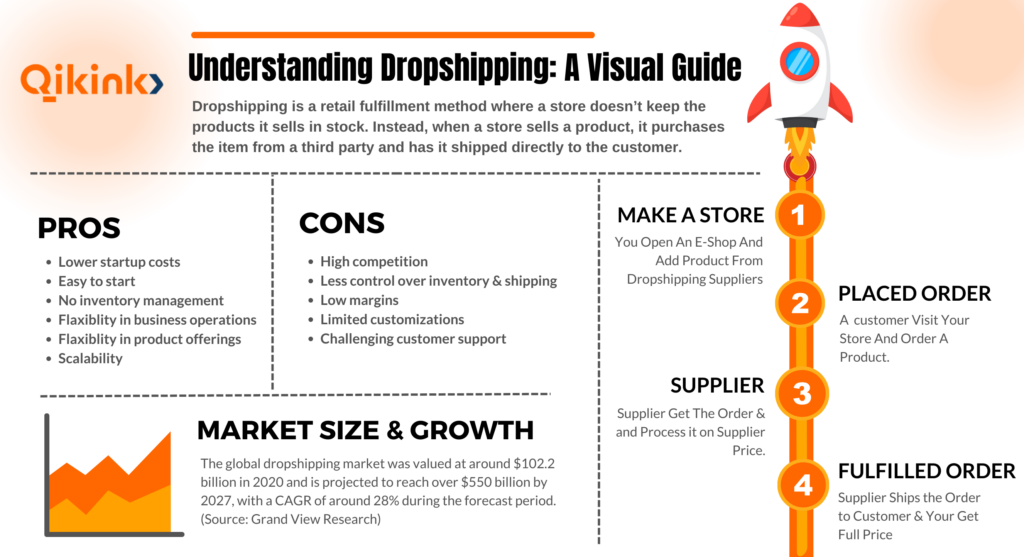
Source: Inventory Source
Dropshipping Glossary terms
There are several terms related to dropshipping that you may come across:
1. Dropshipping
A retail fulfillment method where a store doesn’t keep the products it sells in stock. Instead, when a store sells a product using the dropshipping model, it purchases the item from a third party and has it shipped directly to the customer.
Example: An online retailer lists a product for sale on their website but doesn’t actually have it in their own inventory. When a customer places an order, the retailer purchases the product from their supplier and has it shipped directly to the customer.
2. Supplier
A manufacturer, distributor, or wholesaler that supplies products to retailers. Example: An online retailer sources their products from various suppliers in China that manufacture the products.
3. Order fulfillment
The process of receiving, packaging, and shipping orders to customers. With dropshipping, the supplier fulfills the orders directly to customers.
Example: Once an order is placed, the dropshipper sends the order info to their supplier who then fulfills the order by shipping it to the customer.
4. Wholesale supplier
A company or individual that sells products in bulk quantities at wholesale pricing to retailers, who then sell the products to consumers at retail pricing. Dropshippers source inventory from wholesale suppliers.
Example: A dropshipper locates wholesale suppliers for the products they want to sell so they can offer competitive pricing.
5. Dropshipping agent
A company that serves as an intermediary between retailers and suppliers by connecting retailers with product sources and handling order forwarding and fulfillment.
Example: A retailer uses a dropshipping agent to find suppliers, negotiate pricing, and facilitate order processing.
6. Order forwarding
The practice of sending customer order information from a retailer to a supplier to fulfill the order. The supplier ships the order directly to the customer.
Example: When an order comes in, the retailer forwards the order info and shipping address to the supplier to fulfill and ship.
7. Just-in-time fulfillment
An inventory strategy is used in dropshipping where products are only ordered from the supplier once an order has been received from a customer. This minimizes inventory costs.
Example: Rather than stocking inventory in advance, a dropshipper waits until an order is placed by a customer to request the item from their supplier.
8. Print-on-demand:
A dropshipping model where products like books, t-shirts, and other printed merchandise are only printed once an order comes in. This eliminates the need to stock pre-printed inventory.
Example: A dropshipping t-shirt business sends t-shirt orders to a print fulfillment partner who prints and ships the shirts directly to customers.
Dropshipment and Dropshipping both mean the same thing. In simpler terms, there is no difference between the two terms – they are interchangeable.
9. Supplier:
A supplier is a company or individual that provides products for sale to a retailer or online seller.
10. Retailer:
A retailer is a business that sells products to consumers, often through a physical store or online platform.
11. Wholesaler:
A wholesaler is a supplier who sells products in bulk to retailers or other businesses at a discounted price.
12. Fulfillment center:
A fulfillment center is a third-party logistics provider that manages products’ storage, packaging, and shipping on behalf of a retailer or online seller.
13. E-commerce platform:
An e-commerce platform is a website or software that enables businesses to sell products online and manage their sales, marketing, and inventory.
14. Online marketplace:
An online marketplace is a platform that allows multiple retailers and sellers to list and sell their products on the same website, often with the support of a dropshipping model.
How Does Dropshipping Work? (A 2023 Example)
Let’s see how dropshipping works with an example as it happens, along with the relevant tax information and an analysis of its profitability compared to inventory-led eCommerce.
Example:
Suppose that a dropshipper has chosen to sell mobile phone cases through their online store. They have found a reliable supplier who can dropship the issues directly to customers, and they have set up their online store on Shopify.
The dropshipper selects various phone cases from the supplier’s catalog and adds them to their Shopify store at a markup. The dropshipper then sets up various marketing campaigns to attract customers to their store.
A customer orders a phone case from the dropshipper’s store for Rs. 500. The dropshipper receives the order and payment details and forwards the order to the supplier, who then ships the phone case directly to the customer.
The supplier charges the dropshipper Rs. 300 for the phone case, leaving a profit of Rs. 200 for the dropshipper. The dropshipper uses this profit to cover expenses such as website hosting, marketing, and taxes.
Tax Information:
In India, the Goods and Services Tax (GST) applies to dropshipping. The dropshipper must register for a GST number and charge GST on the sale price of the phone case, which is Rs. 500 in this example. The GST rate depends on the product category, and for mobile phone cases, it is currently 12%.
Therefore, the dropshipper would charge the customer Rs. 560 (Rs. 500 + 12% GST) for the phone case, and remit Rs. 60 (12% of Rs. 500) to the government as GST.
Profitability Comparison: Dropshipping can be more profitable than inventory-led commerce models because it eliminates the need for the dropshipper to invest in inventory or warehousing costs. Additionally, dropshippers can offer a wider variety of products without worrying about the costs and risks associated with stocking them.
However, dropshipping does come with its own challenges, such as finding reliable suppliers, managing customer service, and dealing with potential shipping delays or quality issues. Additionally, the profit margins for dropshipping may be lower compared to inventory-led commerce, as the supplier’s fees can be higher to compensate for their own costs and risks.
Ultimately, the profitability of dropshipping depends on various factors such as the product selection, supplier relationships, marketing efforts, and overall business strategy. A thorough analysis and comparison of the costs and benefits of dropshipping versus inventory-led commerce would be necessary to determine which model is more profitable for a specific business.
Ecommerce Dropshipping Process
The dropshipping process involves several steps, including:
Selecting a product:
The first step in dropshipping is selecting a product or products to sell. Dropshippers can research and select products based on market demand, profit margins, and competition.
Finding a supplier:
Once a product is selected, dropshippers must find a supplier who is willing to dropship the product on their behalf. This involves researching and vetting potential suppliers based on factors such as product quality.
Setting up an online store:
After selecting a product and finding a supplier, dropshippers need to set up an online store. This can be done through a variety of platforms, such as Shopify or WooCommerce, and involves creating product listings, setting prices, and designing the website.
Promoting the store:
Once the store is set up, dropshippers need to promote it through various marketing channels, such as social media, email marketing, and paid advertising, to attract potential customers and generate sales.
Receiving an order:
When a customer places an order on the dropshipper’s website, the dropshipper receives the order and payment details.
Sending the order to the supplier:
The dropshipper then forwards the order details to the supplier, who processes and ships the order directly to the customer on behalf of the dropshipper.
Tracking and updating the order:
The dropshipper should track the shipment to ensure that it is delivered to the customer in a timely manner. They should also update the customer with the order status, such as shipping confirmation and tracking information.
Handling customer service:
The dropshipper is responsible for handling any customer inquiries or issues that arise during the order process, such as questions about the product, shipping, or returns.
In summary, the dropshipping process involves selecting products, finding a supplier, setting up an online store, promoting the store, receiving and forwarding orders to the supplier, tracking and updating the order, and handling customer service.
Dropshipping can be a profitable and low-risk way to start an online business, as it eliminates the need to handle inventory or fulfilment, but requires careful research and planning to ensure success.

Benefits of Ecommerce Dropshipping
Dropshipping is a popular and profitable business model that can be beneficial for entrepreneurs and for anyone who wants to start selling products online. Some of the key benefits of dropshipping are:
Low startup costs:
Dropshipping eliminates the need for a large upfront investment in inventory or warehousing costs, which can be a major barrier for entrepreneurs who are just starting out.
By working with suppliers who handle inventory and fulfilment, dropshippers can focus on building their online store and marketing their products, without worrying about storage and shipping expenses.
Wide selection of products:
Dropshipping allows businesses to offer a wide range of products without worrying about stocking them. This can be beneficial for businesses that want to offer a variety of products to their customers without the need to invest in inventory.
Dropshipping Lifestyle:
Dropshipping offers a lot of flexibility for businesses, as they can add or remove products from their store easily based on customer demand. This allows businesses to adapt quickly to changing trends and customer preferences.
Location Independence:
With dropshipping, businesses only pay for products when they are sold, which reduces the risk of holding excess inventory. Additionally, businesses can test out new products and markets without committing to a large upfront investment.
Lower Risks:
With dropshipping, businesses only pay for products when they are sold, which reduces the risk of holding excess inventory. Additionally, businesses can test out new products and markets without committing to a large upfront investment.
Scalability:
Dropshipping is a scalable business model that can be easily expanded as the business grows. By adding new products, suppliers, and marketing channels, businesses can increase their sales and profits without the need for additional resources.
So, dropshipping offers several benefits, including low startup costs, a wide selection of products, flexibility, location independence, lower risks, and scalability.
These advantages can make it an attractive option for entrepreneurs and small businesses looking to start an online business with low risk and high potential for growth.
Terms and Conditions of Dropshipping
Running a dropshipping business in India requires clear terms and conditions to protect your business and customers. Some key points to include are:
- Product availability and pricing
- Shipping and delivery
- Returns and refunds
- Product quality and warranties
- Intellectual property rights
- Dispute resolution
Make sure to consult with a legal professional to ensure your terms and conditions are enforceable and compliant with local laws and regulations. Having clear terms and conditions can prevent misunderstandings and legal issues. Remember to ensure your content is original.
Is Dropshipping Profitable?
- Dropshipping is a popular business model that has gained a lot of attention in recent years, as it offers a low-cost and low-risk way for entrepreneurs to start their own e-commerce business.
- However, whether or not dropshipping is profitable depends on a number of factors, such as the niche, product selection, marketing strategy, competition, and overall business operations.
- One of the advantages of dropshipping is the ability to offer a wide variety of products without holding inventory or investing in warehousing costs.
- This can allow dropshippers to offer unique and in-demand products to customers, which can translate into higher profit margins.
- Additionally, because dropshippers only pay for products after they are sold, they can maintain a lean business model, with minimal overhead costs.
- However, there are also potential drawbacks to dropshipping that can impact profitability.
- For example, because dropshipping is a highly competitive industry, businesses must invest in effective marketing strategies to attract and retain customers.
- This can include SEO, paid advertising, social media marketing, and email marketing. The cost of marketing can vary greatly depending on the niche and competition, which can eat into profit margins.
- Another challenge with dropshipping is the potential for logistical issues, such as shipping delays, product quality issues, or supplier miscommunications.
- These issues can impact customer satisfaction and result in negative reviews, which can damage the reputation of the business and hurt sales.
- To maximize profitability with dropshipping, businesses need to focus on finding a profitable niche with high demand and low competition.
- This can involve conducting market research and identifying products that are unique or have a strong value proposition.
- Additionally, businesses should invest in building a strong brand identity and effective marketing strategies to attract and retain customers.
Overall, while dropshipping can be profitable, it requires careful planning, effective marketing, and efficient operations. By focusing on the right niche, product selection, and business operations, dropshippers can build a profitable and sustainable business model.
Dropshipping Meaning: The Value Proposition
- The value proposition of dropshipping lies in its ability to offer a convenient and cost-effective solution for businesses to sell products online without the need for physical inventory or warehousing.
- By leveraging the expertise and resources of suppliers and manufacturers, businesses can focus on building their brand and marketing their products, while outsourcing the fulfilment process to their partners.
- This allows businesses to operate with lower overhead costs, fewer risks, and greater flexibility, making it an attractive option for entrepreneurs and small businesses.
- Dropshipping can also be good for the world in several ways. It can help to reduce waste and environmental impact by eliminating the need for excess inventory and warehousing.
- This can also lead to more sustainable and efficient supply chains, as businesses can work with suppliers who are closer to their customers, reducing the carbon footprint associated with transportation.
- Dropshipping can enable small businesses and entrepreneurs to compete with larger corporations, by giving them access to a wider range of products and the ability to reach customers around the world.
- This can foster greater innovation, diversity, and competition in the marketplace, leading to better products, services, and customer experiences.
- It can also provide economic opportunities for people in developing countries, by connecting them to global markets and creating jobs in the logistics and fulfilment industries.
- This can contribute to greater economic growth and prosperity, both locally and globally.
- Thus the value proposition of dropshipping lies in its ability to provide a convenient and cost-effective solution for businesses to sell products online, while also contributing to greater sustainability, innovation, competition, and economic growth around the world.
Conclusion
In conclusion, a dropshipping business is a model where a retailer does not hold inventory but relies on a third-party supplier or manufacturer to fulfill customer orders.
The benefits of dropshipping include low startup costs, wide product selection, flexibility, location independence, lower risks, and scalability.
Dropshipping can also benefit the world by reducing waste and environmental impact, fostering greater innovation and competition, and creating economic opportunities.
Dropshipping is a popular and profitable option for entrepreneurs and small businesses looking to start an online business with low risk and high growth potential.
Read more
- Scope of Dropshipping in India: Why to Start it as a Busines
- Etsy Dropshipping: The Ultimate Side Hustle For Creatives
- Your Ultimate Guide to Shopify Dropshipping: Building a Profitable Online Store with Minimal Risk
- How To Sell Products Online Without A Website
- Dropshipping Meaning: Basics of Dropshipping Business & How Does It Works?
Frequently Asked Questions
What are the key advantages of starting a dropshipping business in the Indian market?
Starting a dropshipping business in the Indian market offers multiple benefits, such as low start-up costs, minimal inventory management, and offering a wide range of products without upfront investment.
How can I find and partner with reliable suppliers for dropshipping in India?
To partner with reliable suppliers for dropshipping in India, you can search for them online, attend trade shows, or contact manufacturers directly. It’s advisable to conduct thorough research and due diligence before partnering with any supplier.
Are there specific niches or products that work well for dropshipping in the Indian context?
In the Indian context, specific niches or products like fashion, beauty, home decor, and electronics work well for dropshipping. However, it’s crucial to research and validate the demand and competition for any niche or product before pursuing it.
What steps are involved in setting up and running a successful dropshipping business in India?
Setting up and running a successful dropshipping business in India involves selecting a niche, finding reliable suppliers, creating an online store, marketing and advertising, and handling customer service. It’s essential to have a solid business strategy and plan in place.
What are the challenges and potential pitfalls to be aware of when operating a dropshipping business in India?
Operating a dropshipping business in India comes with challenges and potential pitfalls, such as finding reliable suppliers, managing logistics and shipping, handling customer service, dealing with competition, and maintaining profitability. To succeed, staying informed and adapting to changing market conditions is important.
With over 10+ years of experience in the industry, Our founder has dedicated his career to helping brands achieve exponential growth through innovative print-on-demand solutions.

